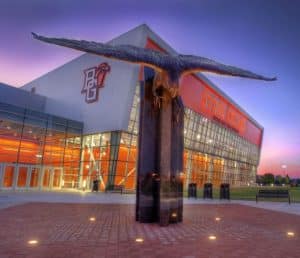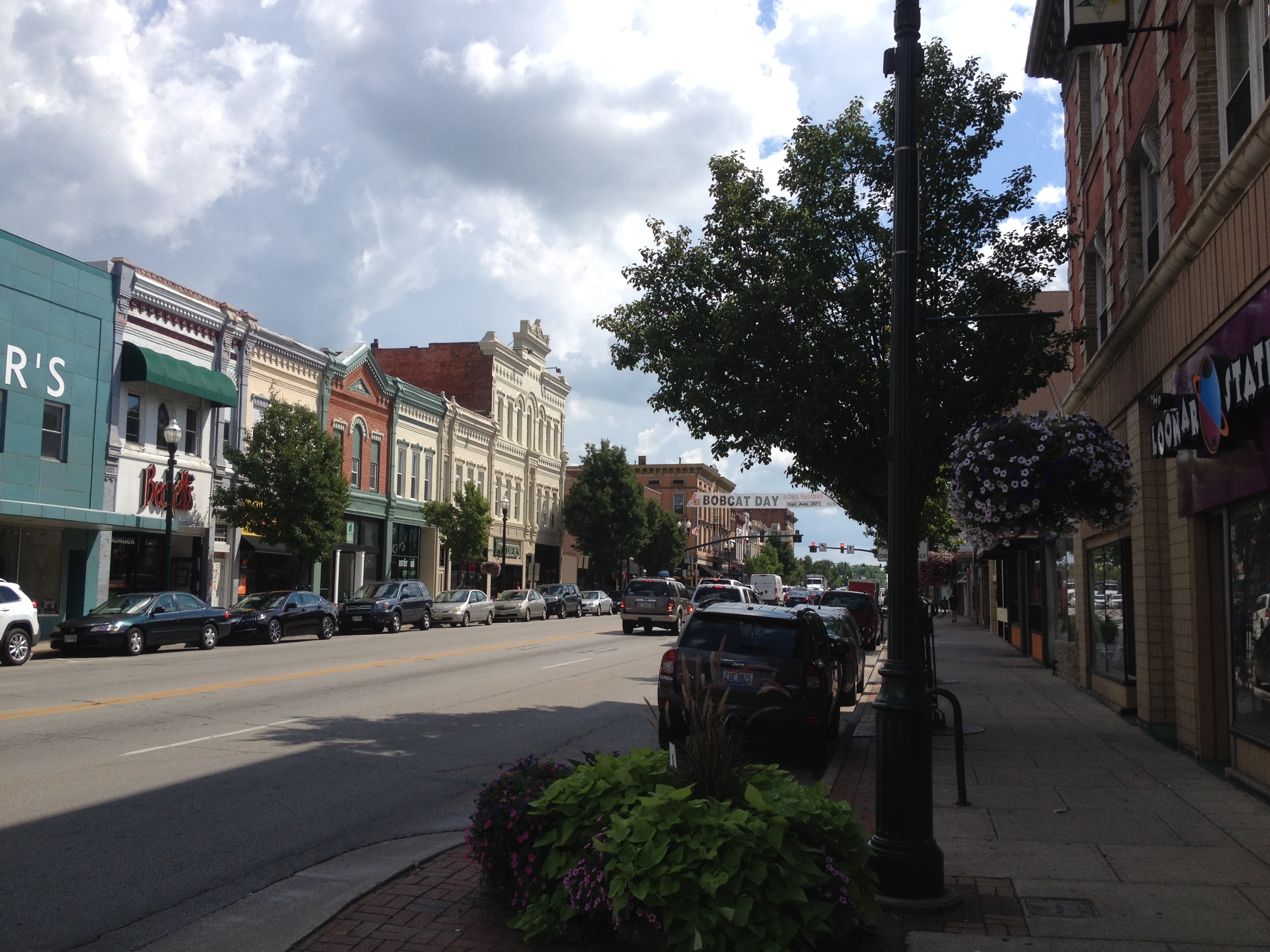About Bowling Green
Here’s a little bit about the city of Bowling Green if you are looking for a Tax Attorney Bowling Green Ohio.
Bowling Green is a city in and the county seat of Wood County, Ohio, United States, located 20 miles (32 km) southwest of Toledo. The population was 30,028 at the 2010 census. It is part of the Toledo Metropolitan Area and a member of the Toledo Metropolitan Area Council of Governments. Bowling Green is the home of Bowling Green State University.
Bowling Green was first settled in 1832, was incorporated as a town in 1855, and became a city in 1901. The village was named after Bowling Green, Kentucky, by a retired postal worker who had once delivered mail there.
With the discovery of oil in the late 19th and early 20th century, Bowling Green experienced a boom to its economy. The wealth can still be seen in the downtown storefronts, and along Wooster Street, where many of the oldest and largest homes were built. A new county courthouse was also constructed in the 1890s, and a Neoclassical post office was erected in 1913.
This period was followed by an expansion of the automobile industry. In late 1922 or early 1923, Coats Steam Car moved to the area, but eventually went out of business. Bank Robbers Pretty Boy Floyd and Billy the Killer encountered police in Bowling Green in April 1931, resulting in the death of Billy the Killer. In World War II Italian and German prisoners of war were used to staff the Heinz Tomato Ketchup factory in town. The ketchup factory closed in 1975. The CSX 8888 incident passed through Bowling Green in 2001.
According to the United States Census Bureau, the city has a total area of 12.61 square miles (32.66 km2), of which 12.56 square miles (32.53 km2) is land and 0.05 square miles (0.13 km2) is water. Bowling Green is within an area of land that was once the Great Black Swamp which was drained and settled in the 19th century. The nutrient-rich soil makes for highly productive farm land.
As of the census of 2010, there were 30,028 people, 11,288 households, and 4,675 families living in the city. The population density was 2,390.8 inhabitants per square mile (923.1/km2). There were 12,301 housing units at an average density of 979.4 per square mile (378.1/km2). The racial makeup of the city was 87.6% White, 6.4% African American, 0.2% Native American, 2.1% Asian, 1.4% from other races, and 2.2% from two or more races. Hispanic or Latino of any race were 4.8% of the population.
There were 11,288 households, of which 18.9% had children under the age of 18 living with them, 30.7% were married couples living together, 7.5% had a female householder with no husband present, 3.2% had a male householder with no wife present, and 58.6% were non-families. 35.8% of all households were made up of individuals, and 7.2% had someone living alone who was 65 years of age or older. The average household size was 2.16 and the average family size was 2.82.
The median age in the city was 23.2 years. 12.8% of residents were under the age of 18; 43.2% were between the ages of 18 and 24; 19.5% were from 25 to 44; 15.7% were from 45 to 64; and 8.9% were 65 years of age or older. The gender makeup of the city was 48.0% male and 52.0% female.
Every September, the Black Swamp Arts Festival takes place in Bowling Green. Started in 1993, the festival has grown in size and prestige.
The name Black Swamp was chosen for the festival because it is a common term for this area of the state. The Great Black Swamp, which was drained near the end of the 1800s to make farming possible, extended from Lake Erie to Indiana. It was the last area of Ohio to be settled. Bowling Green is the largest city now in the remnants of this vast wetland.
Main Street is closed to traffic for the festival, and artists from around the country display and sell a variety of artwork. There are also musical performances, children’s activities, and food. The festival has grown to include over 100 juried artists, 50 local/invitational artists, four live music stages, youth arts, acts of art, and concessions. Numerous types of music, including blues, jazz, and rock, are heard from the main stage. The Festival has a reputation for booking a diverse and entertaining musical line up. The Main Stage features national and international touring bands of all genres. The Black Swamp Arts Festival attracts 40,000 art and music fans to Bowling Green.
Bowling Green has hosted the National Tractor Pulling Championships since 1967. This annual event, one of the largest in the nation, is held at the Wood County Fairgrounds and draws an estimated 60,000 people. The Fairgrounds is located along Poe Road between Haskins Road (State Route 64) and Brim Road.
Every year Bowling Green hosts the Wood County Fair, a week-long festival that begins shortly before or after the end of July. The fairgrounds are located off Poe Road between Haskins and Brim roads. Main Events include: Tractor Pull, Altered Farm stock Tractor Pull, Antique Tractor Pull, Mule Pull, Semi-Truck Pull, Youth Parade, Demolition/Combine Derby, Catch-a-pig, Cheerleading Competition, Harness Racing, and the annual Country Music Concert. Another special event is quilt day. Special Days like Senior Citizen day or DARE day allow discounted tickets.
LifeFormations, a mechatronics company, is based in Bowling Green. They have made animatronics based on licensed properties such as Shrek for theme parks such as Universal Studios Florida.
Lubrizol maintains a soap and surfactant production plant in Bowling Green. The Bowling Green plant opened in 1994 and was expanded in 2013.
Aliquantum International maintains a sales office in Bowling Green. The company licenses characters from the Japanese company San-X for local markets, such as Rilakkuma.
Poggemeyer Design Group, an architecture and engineering firm, maintains its headquarters in Bowling Green.
If you are looking for a tax attorney Bowling Green Ohio, you are at the right spot. Give us a call today at 330-331-7611.









